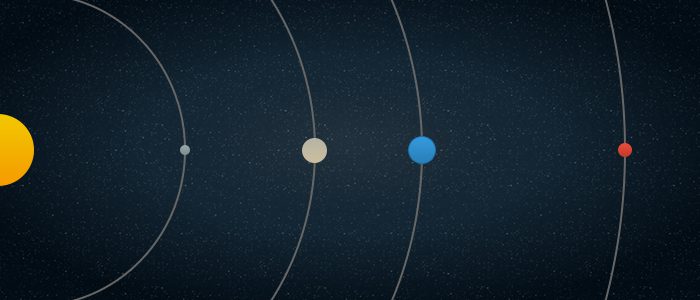
Earth is a perfect amalgamation of all the conditions necessary for live to thrive. I always hear that the other terrestrials cannot sustain life, but never exactly sure how unsuitable they were. I mean if there was only one thing wrong with them, who’s to say we wouldn’t be able to invent a solution in the next 20 years? Expectedly, there are many big faults for each planet, however some of these problems were not what I expected. For example, the distance from the Sun. The Earth at 1 AU is the perfect distance from the sun. However, it is feasible for life to sustain at anywhere from 0.7 AU to 2.0 AU. Venus at 0.72 AU barely falls into the range, while Mars comfortably sits inside at 1.5 AU. The only terrestrial eliminated by this condition is Mercury, at a minuscule 0.4 AU.
The main problem between the remaining two terrestrials are there atmospheres. The Earth has atmospheric layers primarily consisting of N2 and O2, which are not very good at absorbing sunlight and keep the surface cool. Venus has an incredibly thick atmosphere that contains mostly C2, which is very good at absorbing sunlight. This causes the surface of Venus to be blisteringly hot. This is also the reason why water cannot exist on Venus, as any water would instantly be boiled into gas and the hydrogen atoms would flow into space. The Martian atmosphere, on the other hand, is far too weak. While some spots of Mars remain comfortably above freezing, water would still boil on Mars due to the low atmospheric pressure. Mars cannot retain a large enough atmosphere due to its small size.
Overall, there may be MANY reasons why colonizing any other planet is a dream of the future.
It’s interesting to note that habitable zones for planets depends upon the star they orbit. For example, exoplanets that orbit a less bright red dwarf would need to be a lot closer to their star than 1 AU in order to sustain life!
LikeLike
It is crazy to think about the different variables for life and the improbability of it forming. How our planet needed to fall within a certain distance from the sun in order for the planet to maintain characteristics like water (any further away would lead to ice and any closer would cause evaporation). While also having a large enough molten core to establish and keep an atmosphere.
It is also interesting to note that Mars once did have a functioning atmosphere that allowed for the formations of rivers and oceans (which are visible in the current geological features on Mars’ surface) but could not sustain the atmosphere due to the size of its molten core.
LikeLike